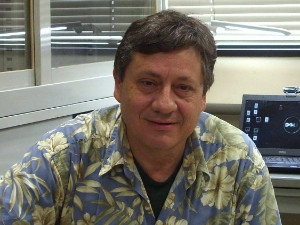Energy Saving in Data Centers
A special issue of Electronics (ISSN 2079-9292). This special issue belongs to the section "Computer Science & Engineering".
Deadline for manuscript submissions: closed (31 July 2016) | Viewed by 26410
Special Issue Editor
Special Issue Information
Dear Colleagues,
The chief executive officer of Google remarked “What matters most to the computer designers at Google is not speed but power, low power, because data centers can consume as much energy as a city.” Cloud computing now represents a backbone of IT services, and, recently, there has been an increase in high-definition multimedia delivery, which has placed new burdens on energy resources. Energy demands have motivated research on energy efficiency strategies and the implementation of renewable energy sources as to reduce operational costs and environmental impact. The ever-increasing scale of data centers has presented unprecedented challenges for hardware and algorithmic development.
This Special Issue aims to present a wide range of papers with contributions in the area of green cloud computing. Contributions which bring together hardware challenges and algorithmic approaches are especially encouraged and we are interested in contributions from researchers who work at the intersection of Electrical Engineering, Modeling and Simulation, and Computer Science. However, we invite researchers from all relevant fields to contribute case studies, reviews, surveys and research papers.
Prof. Dr. Wolfgang Bein
Guest Editor
Manuscript Submission Information
Manuscripts should be submitted online at www.mdpi.com by registering and logging in to this website. Once you are registered, click here to go to the submission form. Manuscripts can be submitted until the deadline. All submissions that pass pre-check are peer-reviewed. Accepted papers will be published continuously in the journal (as soon as accepted) and will be listed together on the special issue website. Research articles, review articles as well as short communications are invited. For planned papers, a title and short abstract (about 100 words) can be sent to the Editorial Office for announcement on this website.
Submitted manuscripts should not have been published previously, nor be under consideration for publication elsewhere (except conference proceedings papers). All manuscripts are thoroughly refereed through a single-blind peer-review process. A guide for authors and other relevant information for submission of manuscripts is available on the Instructions for Authors page. Electronics is an international peer-reviewed open access semimonthly journal published by MDPI.
Please visit the Instructions for Authors page before submitting a manuscript. The Article Processing Charge (APC) for publication in this open access journal is 2400 CHF (Swiss Francs). Submitted papers should be well formatted and use good English. Authors may use MDPI's English editing service prior to publication or during author revisions.
Keywords
- data center sustainability, dependability and cost
- energy reduction in server systems
- energy-aware resource allocation
- energy-optimized multimedia clouds
- thermal states and cooling system operation
- power-down management
- burdened energy management
- dynamic voltage and frequency scaling
- dynamic component deactivation
- load balancing power for cluster-based systems
- power management in virtual cloud environments
- geographic cloud server location design
- case studies simulations for data center energy problems
- approximation algorithms and heuristics for data center energy problems
- integration of renewable energy to cloud computing





